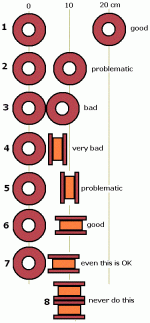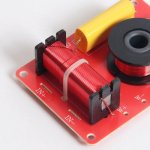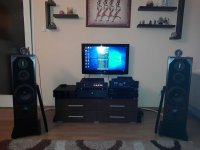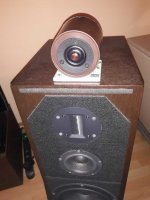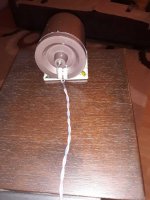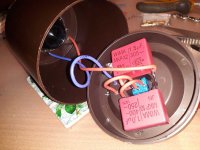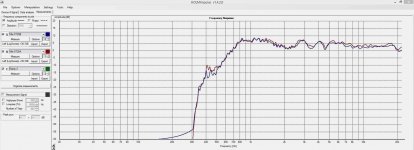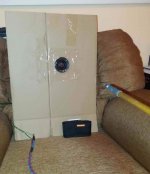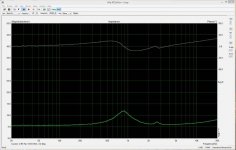English please
do I put it on its side or flat ?
Place the air coil flat on the board.
See Fig. 6 in the attachment: the air coil is on the left (axis vertical) while the iron core is on the right (axis horizontal).
Placing coils like this so that their axes are at right angles to each other minimises their magnetic interaction.
Also keep the coils as far apart as possible.
Attachments
English please
Better still, here's a photograph!
Attachments
Thanks for the DAC info. That saves me some time. What was wrong with the Topping D90SE timbre?
was just not natural.
it took me a few seconds to hear it.
im not joking or being cras.
one of the worse DACs I’ve heard.
im a musician of over 35 years. Again not bragging or claiming any rights to perfect ears. But the topping was really bad.
i got into a DAC kick for awhile to try and beat my Marantz.
only the benchmark DAC3 and the chord mojo were serious contenders.
the chord mojo being a bit gimmicky. Very lush sound. Was fun tho.
the benchmark DAC3 had amazing detail on the low end. And tightness.
but the timbre and over all performace of the Marantz DAc was better.
i even called rory at benchmark and told him. Lol.
he was Cool about it.
its why I got a second Marantz DAc as a backup.
i really wanted something to beat it. But no
the biggest disappointment was the Denafrips Venus.
$3500 DAc.
i plugged it in………….and was like ……..no way.……wtf??
nope again.
great instrument separation though
make no mistake though. The benchmark AHB2 coupled with the LA4 preamp is heaven. Amazing timbre. Just flat out accuracy. Especially the LA4
Last edited:
Better still, here's a photograph!
ha , NOW we’re talkin.
thanks kind sir
Thanks for the DAC info. That saves me some time. What was wrong with the Topping D90SE timbre?
and god I hope this doesn’t come off as musician snobbery .
but I don’t test gear with 80’s music. Even though I adore it.
if a piece of gear doesn’t accurately represent classical or jazz it’s out the window.
especially classical.
if I don’t hear the howl in a violin ( which I played for a few years ) it doesn’t do it.
a violin can make this distinct howl. I call it a howl because it’s the sound from the construction of the instrument. The F holes.
if you have a piece of gear that you can swear you hear the instruments resonance it’s gold.
don’t know if that makes sense.
an acoustic guitar has a specific resonance. And again depending on the maker.
a violin and cello have this characteristic howl and you can hear the chamber in them.
Oboes. God I love them. Never thought I would.
its like you can hear the air in their chambers or construction.
drums even have harmonics. Unless you tune them like crap.
brass as well.
just amazing stuff.
if you can get analog instruments to sound right you are there.
piano is the most difficult. So so hard to record And get it right.
i think that’s about the only instrument where hearing it live is really A different story.
when you play an instrument you can FEEL the feedback and sound. It’s really hard to explain.
when your finger is spot on with your intonation on a guitar, you can feel the feedback the instruments gives you.
so when I hear a recording I can actually know how it feels in my fingers.
again not bragging. I swear I’m Not.
i just get excited when I talk about instruments
i just get excited when I talk about instruments
Yes, I'm feeling this!
Attachments
@tone? I would suggest you try the backfire tweeter first, for that sparkle that is missing. Here are some of my funny improvisations for a friend. The problem was the same, and it was solved this way. The picture shows the tests in my system. They are really good tuned to Tannoy 10inch old concentric speakers, as a backfire tweeters. Cheap Chinese test drivers, you just need some more resistors and test PP capacitors, the cheapest you can find. They sound super clean, and without distortion, I was surprised. Just buy the 8ohm model.
https://www.aliexpress.com/item/32830509333.html?pdp_npi=2@dis!USD!21.72!20.63!!!!!@214fbb8e16557277803793041e!65022730852!affd&dp=7-1443&aff_fcid=356d21c7957a41c695b0c665f37a48ec-1655727780867-00106&aff_fsk&aff_platform=api-new-product-detail&sk&aff_trace_key=356d21c7957a41c695b0c665f37a48ec-1655727780867-00106&terminal_id=0baa132b3feb436dab0c9c36d0e14036&afSmartRedirect=y
https://www.aliexpress.com/item/32830509333.html?pdp_npi=2@dis!USD!21.72!20.63!!!!!@214fbb8e16557277803793041e!65022730852!affd&dp=7-1443&aff_fcid=356d21c7957a41c695b0c665f37a48ec-1655727780867-00106&aff_fsk&aff_platform=api-new-product-detail&sk&aff_trace_key=356d21c7957a41c695b0c665f37a48ec-1655727780867-00106&terminal_id=0baa132b3feb436dab0c9c36d0e14036&afSmartRedirect=y
Attachments
One assumes OP has tried an equaliser (it's been a long thread, sorry if I missed it)
nah. i dislike EQs.
again I wanted a better tweeter. Better quality from 2.5khz and up
The new tweeters are a bit more efficient, so either these 1R5 resistors will stay or you may have to increase them a bit.
the new tweeters are 91.5db and the old are 92db
its too early to be drinking there
lol
jk
Except when you use a crossover to do the same thing?i dislike EQs
Now I found, all sensitivity data are given for 2.83V / 1m. Since the drivers are 4ohm, that means -3dB for 1W / 1m. In that case the old driver is 89dB 1W 1m and the new one is 91.5 db 1W 1m. So I say try 1R5 first and if it's too harsh, go for 1R8 or 2R2 resistors. It also depends on those capacitors in front of the tweeter. In principle the better they are, the brighter they sound, although not in all cases.
Last edited:
Except when you use a crossover to do the same thing?
very very different.
plus like I said I want a better tweeter. Not just a boost in sparkle.
actually that is my bad. Scratch the sparkle.
i just want a better tweeter for timbre and transient response
It’s the 3004/6600
I was wrong again. I watched the beginning of the topic.
- Home
- Loudspeakers
- Multi-Way
- 'Upgrading’ my tweeters (can I do this?)
